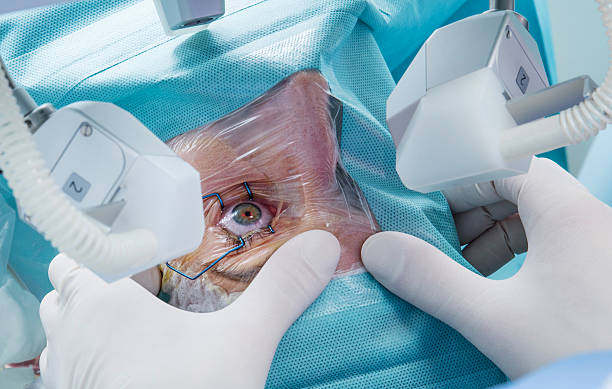Making a choice to get your eyesight fixed permanently is a big responsibility. When you are no longer dependent on glasses and contact lenses, it feels very liberating.
You must educate yourself about the two types of LASIK - traditional LASIK and blade free LASIK, now that you've made the decision to proceed with the procedure. Traditional LASIK is fine, but blade free LASIK gives you the best results.
Keep reading to learn about LASIK in detail and why blade free LASIK is the better option!
Basics of Lasik:
It will be useful to understand the fundamentals of LASIK and its uses in eye surgery before we delve into the complex distinctions between LASIK with blades and blade free Lasik. The minimally invasive procedure improves the eye's capacity to alter the cornea's shape, aiding in the recovery of lost vision. The technique developed to make eye surgeries painless has since been modified to make them safer and improve surgeons' ability to carry out procedures with greater precision. The altered procedure is referred to as Blade Free LASIK Surgery.
Do You Need LASIK?
Now that you've learned more about LASIK, you should consider whether it's right for you. LASIK is a fantastic procedure, but it is not for everyone. You should meet specific requirements for this procedure.
If you meet the following requirements, the next step is to schedule a LASIK consultation:
- Are you at least 18 years old?
You must at least be 18 years old in order to undergo LASIK Surgery.
- Have you undergone the preliminary Topographic evaluation?
Any LASIK procedure that you opt for - requires you to be eligible in the Corneal Topogaphy Test. This test checks the thickness of your cornea and helps your doctor understand your eye better and help you choose a platform. Those with thin corneas are usually advised against getting the LASIK Surgery done.
- Are you pregnant or nursing?
If you are, you must wait at least three months after you finish nursing or 1 year after giving birth before having LASIK. During pregnancy or nursing there are so many hormonal changes that occur - which hamper with the healing process of your cornea post-surgery.
- Are you realistic about what to expect from LASIK?
What do you imagine your life will be like after LASIK? To be more realistically prepared, discuss any concerns or questions.
What Is Blade LASIK?
Surgeons must cut a small, hinged flap in the eye's cornea to gain access to the cornea. A microkeratome is used in blade LASIK to accomplish this. The cornea is extremely thin, and the microkeratome blade makes a cut that is only 500 to 600 micrometres deep.
What Is Blade Free LASIK?
The flap is created using a different technology in blade free LASIK. Instead of a blade, it creates the flap with a femtosecond laser. In practice, both produce the same outcome. However, "blade free LASIK" has made the procedure sound less intimidating to many people. Is it, however, the best option?
Which Is Better: Blade or Blade Free LASIK?
Blade LASIK has the advantage of being quick and comfortable for the patient. The disadvantage is that it can occasionally go wrong, but you cannot loose your eyesight with LASIK. This is uncommon but can cause partial flaps, unattached flaps, and buttonhole flaps. However, this risk is much lower with modern microkeratomes than in the past.
During the procedure, blade free LASIK requires a little more suction time. It might not be as relaxing for the patient. This phase, however, lasts for less than a minute. The benefit is that blade free LASIK is more precise and has fewer complications.
The Unquestionable Advantages of LASIK:
Whether you choose blade or blade free LASIK, this procedure allows you to improve your vision. Perhaps you have better eyesight than you have ever had! If you want to get rid of your glasses and contacts, consult your eye doctor about the best option.
Blade Free LASIK by The Vission Eye Center
Vission Eye Centre provide superior clinical outcomes quickly, precisely, and safely by utilising top-of-the-line tools powered by cutting-edge German technology. They track the eye's involuntary saccadic movements using the best eye tracker available. Every LASIK procedure they offer complies with global eye safety standards.







